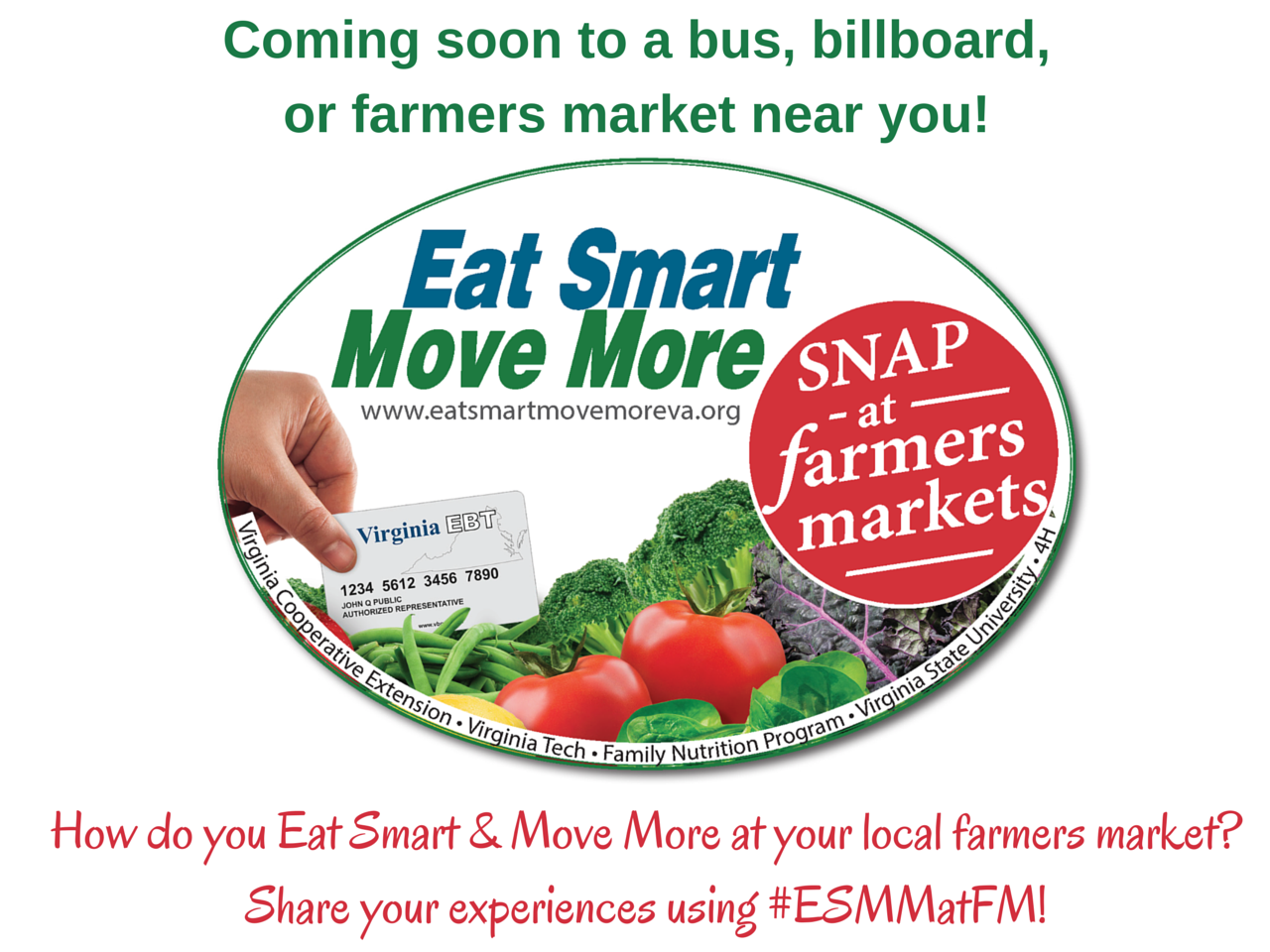We’ve been singing the praises of shopping at the farmers market for fresh, locally grown food a lot this summer. This is because 1- farmers markets are awesome and 2- we are launching a statewide campaign promoting SNAP at Farmers Markets. We think that using SNAP at Farmers Markets is a great way for families to Eat Smart and to help support Virginia Grown foods and local farmers. But as with any new activity, knowing what to expect makes the process easier. And shopping at a farmers market is not the same as shopping at a grocery store.
Keep these things in mind when planning your trip to the farmers market:
- Limited Hours – Unlike 24-hour grocery stores, farmers markets are only open certain hours on certain days of the week during certain months. Check the market’s website or Facebook page to find their hours of operation and mark your calendars. While it takes some getting used to, settling into a set schedule of grocery shopping will keep you organized. And it probably will save you from impulse buys on those quick “I only needed milk and bread, but somehow came home with 2 bags of groceries” trips.
- Vendor’s Tables vs. Supermarket Aisles – In a grocery store, products are arranged by type, with all the different brands of one item in the same place. At the farmers market, all the products are arranged by “brand,” with each table containing all the different types of foods that farmer offers. This means there will likely be more than one table selling the same type of food. To make sure you don’t overlook the best deals and have a good sense of what is available at the market, take a full trip around the entire market to browse what’s for sale. Then head back to the vendors with the best prices, variety, or quality of the products you’d like to buy.
- Seasonal vs. Supermarket Availability – Because the food sold at farmers markets is locally grown, you’ll only find food that is in season. And availability varies week-to-week and month-to-month. Unlike the grocery store, you’ll have to wait until you get there to see what’s available and decide what to buy to get the best deal. Also, most farmers markets do not carry every single food item your family needs for complete and balanced meals. So you’ll still have to visit your usual grocery store to round out your list.
- Cash or Tokens Only – What do you mean tokens? But what about EBT cards? Yes, many, although not all, farmers markets accept SNAP/EBT cards. But, it doesn’t work the same as a grocery store. When you get to the market, find the market manager’s table. You will decide how much money you want to spend. They’ll swipe your card, and give you tokens in return. (In many markets, this is how debit/credit cards are treated as well.) You can then spend the tokens like cash with each vendor you buy from. Tokens don’t expire, so you can use them at your next visit if you don’t spend them all at once.
I’ll admit that the limited hours of farmers markets are the main reason I don’t shop there as often as I would like. I’m in the middle of a 3-week stretch of Saturday volleyball tournaments and won’t be able to make it to the farmers market where I live. Fortunately, there is a Wednesday market in the town where I work, so I was able to pick up some fresh corn on the cob, green peppers, peaches, beef, and eggs yesterday.
What are some of the things that make it more difficult to shop at farmers markets for you? How have you adapted to shopping at farmers markets since the first time you visited?

